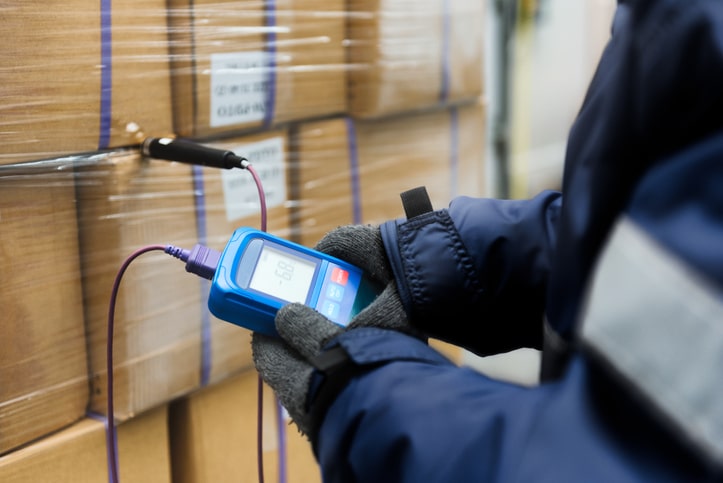Completing the Food Technology, Safety and Quality Diploma Program at AAPS will provide you with your food safety certification while experiencing a comprehensive yet practical, hands-on approach to learning the ins and outs of the industry. Whether you are just beginning your career or looking to complement and upgrade your existing knowledge and skills, our integrated approach will give you the confidence to develop, implement, and maintain food safety programs that comply with recognized standards.
Hazard Analysis Critical Control Points (HACCP) is an internationally recognized food safety system focused on preventing, reducing, and eliminating biological, chemical, and physical hazards. It encompasses the entire process of food production, from the growing and harvesting of raw materials, all the way to the finished product. The seven principals of HACCP are technical and science-based, acknowledged and accepted by governments around the world, and often form the foundation of Food Safety Plans globally.
Keep reading to learn more about the seven principles of HACCP that will effectively help you identify, evaluate and control food safety hazards after your diploma program.
Principle 1: Conduct a Hazard Analysis
As you will learn during your food safety training, the first principal of HACCP includes two phases:
- Hazard Identification: A list is made of each step of the food operation process and the potential biological, chemical, and physical hazards that may cause illness or injury if not controlled.
- Hazard Evaluation: Each potential hazard is evaluated to determine the severity and likelihood of its occurrence if not appropriately controlled.
Once these two stages are complete, the hazards of each step in the production processes are documented, as well as the measures to control them along the way.

When conducting hazard analysis after food safety training, any hazards identified must be documented.
Principle 2: Determine the Critical Control Points (CCPs)
Once you’ve analyzed the hazards, you can determine the critical control points (CCPs). CCPs are any point, step, or procedure of the food operation process where controls can be implemented so that hazards can be prevented, reduced, or eliminated. Examples of CCPs include specific requirements for cooking, chilling, re-heating, packaging, and storage. A single CCP may control more than one hazard, while many CCPs may be needed to control a single hazard.
Principle 3: Establish Critical Limits Using Knowledge from Your Food Safety Training
As mentioned, each CCP has at least one measure to ensure that hazards are controlled. Critical limits are the acceptable minimum or maximum biological, chemical, or physical levels that are necessary to ensure that food is safe for consumption. Using your previous education to confidently establish critical limits will ensure an effective food safety program. The FDA lists the following examples of factors that may need critical limits established in the HACCP Principals & Applications Guide:
- Temperature
- Time
- Humidity
- Salt Concentration
- Chlorine
- Preservatives
Critical limits are scientifically or regulatory based and must be assigned precise values to be accurate. One example of a critical limit may be ensuring that high-risk foods are cooked to an internal temperature of at least 74°C.

Your food safety training will teach you to understand and establish critical limits for hazard control.
Principle 4: Establish Monitoring Procedures
Once the critical limits have been established, comprehensive monitoring forms must be developed to ensure the limits are being followed through observations, measurements, and tracking. If it is determined that there is any loss of hazard control or a deviation over or under the critical limit, then the appropriate improvements or further preventative controls can immediately be instilled in response.
For this reason, it is most effective if monitoring is continuous and documented. If monitoring cannot be done on a continuous basis, the frequency should be often enough that CCPs stay under control. The job of monitoring should be assigned to a specific person trained in monitoring techniques.
Principle 5: Establish Corrective Actions
During monitoring, you may find that deviations from the critical limits occur. Corrective actions work as a plan to respond if and when this happens. This plan should be established in advance and include specific factors for each CPP such as:
- What to do if a deviation occurs
- Who is responsible to carry out the correction actions
- How to accurately document the corrective actions that are taken
A corrective action could be as simple as continuing to cook a high-risk food until it reaches the critical limit or disposing of a product because it has become an irreparable hazard.

Effective monitoring and planned corrective actions are essential aspects of hazard control after your food safety program.
Principle 6: Establish Verification Procedures
Next to monitoring, verification procedures are the activities that further validate that your system is effective and in accordance with your HACCP plan. You can ensure this by frequently reviewing and revising your plan when necessary, confirming that it identifies all hazards and is scientifically sound, and that the plan is continually being followed so that hazards are controlled.
In addition to scheduled monitoring by individuals within a company, verifications may include third parties such as regulatory agencies, experts, or audits by an unbiased independent authority. Examples of further verification include equipment testing, and CCP auditing.
Principle 7: Establish record-keeping and documentation procedures
The final principal of the HACCP System is to comprehensively document every aspect of the plan itself, from principal one to six. By making a concrete plan on how to record information in detail and abiding by your HACCP plan, food operations can protect themselves from liability if a hazard happens to occur. The record-keeping and documentation procedures should be simple for employees to complete and conducted by trained staff members to avoid any errors.
Are you interested in getting your food technology diploma?
Contact AAPS for more information today!




